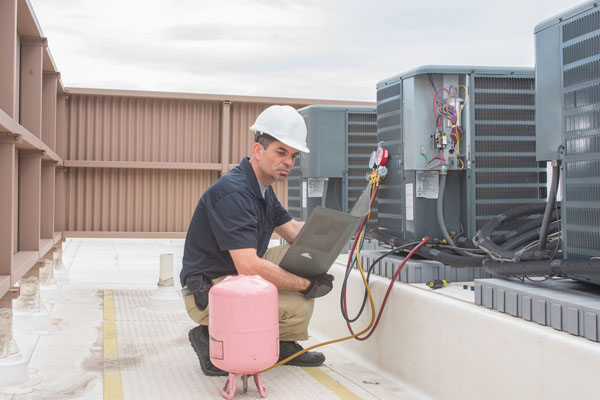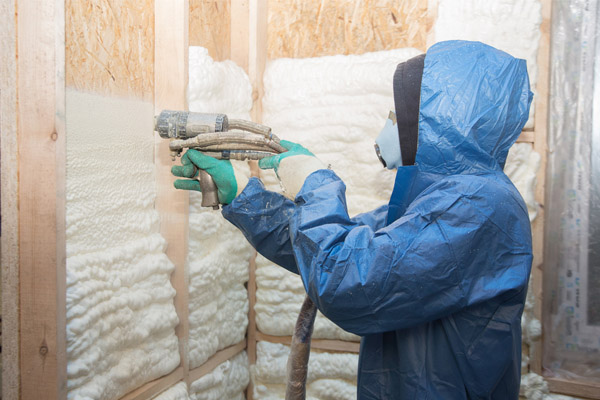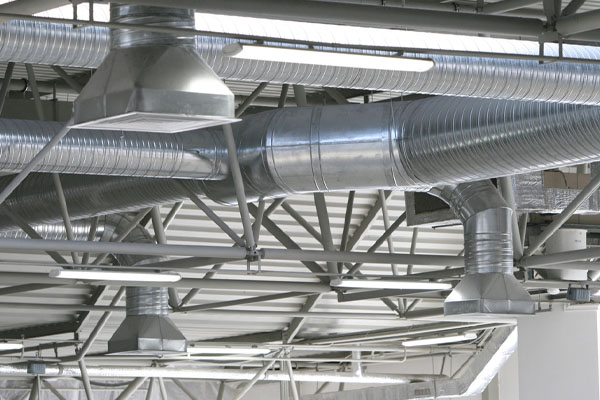The Air Conditioner Effect: How Cooling Technology is Shaping Architecture

The introduction of air conditioning technology has significantly influenced architectural design and construction practices, enabling buildings to adapt to diverse climates and enhance occupant comfort. This article by McAllister Energy explores the impact of cooling technology on architecture, examining how it has shaped building designs, materials, and spatial arrangements. By understanding the relationship between air conditioning advancements and architectural innovation, we gain insights into the development of modern, sustainable, and comfortable built environments.
Cooling Confluence: The Impact of Cooling Technology on Architectural Design
Contents
- 1 Cooling Confluence: The Impact of Cooling Technology on Architectural Design
- 1.1 Evolution of Air Conditioning Technology
- 1.2 The Air Conditioner’s Influence on Building Design
- 1.3 A Cooling System’s Impact on Building Materials & Construction
- 1.4 Integration of Cooling Technology into Architectural Design
- 1.5 Sustainability & Energy Efficiency
- 1.6 Future Trends & Innovations of Architecture & Cooling Technology
- 2 Conclusion
- 3 Contact McAllister Energy for Comprehensive HVAC Services
The symbiotic relationship between cooling technology and architectural design has fundamentally reshaped our built environments.
Evolution of Air Conditioning Technology

The evolution of air conditioning from ancient methods to today’s advanced HVAC systems illustrates a remarkable journey of innovation and adaptation. Early breakthroughs, such as the invention of mechanical cooling, set the stage for a revolution in architectural possibilities, enabling buildings to defy climate limitations and improve occupant comfort.
Key developments, including the advent of energy-efficient and environmentally friendly refrigerants, have further influenced architectural design, encouraging a more sustainable and creative approach to building practices. This progression highlights the critical role of air conditioning in fostering architectural innovation and shaping how we design, construct, and experience spaces.
Maintain your indoor comfort effortlessly with McAllister Energy’s dependable air conditioning services. Reach out for tailored assistance today.
The Air Conditioner’s Influence on Building Design
The advent of air conditioning technology has dramatically influenced architectural design and building layouts, catalyzing a shift towards sealed, climate-controlled environments that prioritize comfort and functionality. This technological integration has spurred changes in building aesthetics, orientation, window design, and spatial organization, allowing for greater design flexibility and energy efficiency.
Architects now strategically consider building orientation and window placement to optimize natural light and minimize heat gain while accommodating the spatial demands of air conditioning systems. This evolution underscores the profound impact of cooling technology on the development of modern, sustainable built environments.
A Cooling System’s Impact on Building Materials & Construction

The evolution of air conditioning technology has reshaped our approach to architectural design and significantly influenced the selection of building materials and construction methods.
The need for effective cooling has led to a preference for materials that enhance insulation and reduce thermal bridging. Advanced insulating materials, such as high-performance foam and aerogel insulation, have become more prevalent. These materials help maintain desired indoor temperatures with minimal energy consumption.
Moreover, adopting green building standards and certifications encourages using materials and construction methods that reduce environmental impact. This includes using sustainably sourced materials, reduced waste construction methods, and integrating renewable energy sources.
Trust McAllister Energy to handle your cooling requirements. Get in touch for immediate and expert service.
Choice of Building Materials & Design Principles
The strategic choice of building materials and design principles also plays a crucial role in enhancing building performance and occupant comfort:
- Thermal Mass Consideration: Buildings are increasingly utilizing materials with high thermal mass, like stone and concrete, to moderate indoor temperatures. During the day, these materials absorb and store heat, releasing it at night to cool the building naturally, reducing the dependence on air conditioning.
- Insulation Importance: Insulation has become a cornerstone in constructing energy-efficient buildings. Effective insulation reduces cooling loads and significantly enhances indoor comfort by maintaining consistent temperature levels and reducing noise.
- Energy-Efficient Design: The layout and orientation of buildings are now more meticulously planned to optimize natural ventilation and daylighting, minimizing the need for artificial cooling and lighting. Such design strategies include the strategic placement of windows, using reflective surfaces to minimize heat absorption, and incorporating shading devices to control solar gain.
Integration of Cooling Technology into Architectural Design

The seamless integration of cooling systems into architectural design is a critical aspect of modern building practices, ensuring optimal functionality without compromising aesthetic appeal or spatial utility.
- Design Elements: HVAC ductwork, vents, and grilles are no longer merely functional components; they have been reimagined as integral architectural design elements. This integration requires careful planning to ensure that these systems complement the overall design language of the space, blending seamlessly with the interior and exterior aesthetics.
- Air Conditioning System Placement: The strategic design and placement of HVAC systems are crucial for achieving efficient air distribution and precise temperature control. This involves considering building orientation, room configurations, and occupant use to determine the most effective locations for vents and ductwork. Proper placement maximizes the efficiency of air conditioning systems and enhances comfort levels by ensuring uniform temperature distribution and air quality throughout the building.
The thoughtful incorporation of cooling systems into architectural design signifies a holistic approach to building development, where functionality, efficiency, and design aesthetics are harmoniously balanced.
Sustainability & Energy Efficiency
The focus on energy efficiency and sustainability in architectural design and cooling technologies marks a significant shift towards more eco-friendly building practices.
Modern advancements in air conditioning, such as energy-saving systems and smart controls, are central to this movement, aiming to enhance comfort while reducing energy use and emissions. Integrating renewable energy sources into cooling systems further highlights the commitment to minimizing environmental impact, illustrating a crucial step towards sustainable development.
Air conditioning plays a crucial role in addressing the urban heat island effect and lowering carbon footprints through green building strategies. Practices like implementing green roofs, optimizing natural ventilation, and improving insulation are instrumental in cutting down the reliance on mechanical cooling, thereby aiding in energy conservation and environmental protection.
This shift towards incorporating sustainability into cooling technology and architectural design improves energy performance and sets a new standard for creating environmentally responsible and comfortable living spaces.
Future Trends & Innovations of Architecture & Cooling Technology

Emerging trends in cooling technology, including passive cooling systems and smart HVAC controls, are set to impact architectural design and urban planning significantly. Passive cooling, utilizing natural processes to reduce temperatures, encourages designs that harmonize with the environment, reducing reliance on energy-intensive systems. Smart controls promise enhanced efficiency and comfort through real-time adjustments to environmental conditions.
The collaboration between architects, engineers, and HVAC specialists is crucial in integrating these advancements, ensuring buildings are aesthetically and functionally forward-thinking. Moreover, green building certifications are pushing the industry towards higher energy efficiency and sustainability standards, indicating a future where architecture and cooling technology evolve in tandem towards minimizing environmental footprints and optimizing urban spaces for future generations.
Stay cool and comfortable without the hassle. Dial McAllister Energy for speedy and effective air conditioning repairs and installations.
Conclusion
Cooling technology has significantly influenced architectural design and building practices, fostering innovations for more comfortable and sustainable environments. The close relationship between air conditioning and architecture highlights the importance of adopting energy-efficient cooling solutions in modern design.
As the field continues to evolve, McAllister Energy offers expert HVAC solutions tailored to meet the sophisticated needs of contemporary architecture, ensuring projects achieve both environmental sustainability and optimal comfort.
Contact McAllister Energy for Comprehensive HVAC Services
In southern New Jersey, McAllister Energy is renowned for delivering exceptional heating and cooling services. Our highly skilled technicians specialize in a broad range of HVAC services, including tune-ups, repairs, installations, and system replacements. Their extensive expertise ensures your HVAC system is in optimal condition, offering the highest standard of care and service.
McAllister Energy is committed to providing cost-effective solutions for your heating and cooling needs. Our maintenance services enhance comfort and energy efficiency, reducing heating and cooling costs. For those requiring repairs or system replacements, we offer competitively priced options that meet your specific requirements, all while upholding our dedication to your complete satisfaction. Reach out to McAllister Energy today for a complimentary in-home estimate or to schedule your next service appointment.
You can click here to contact us now or call us at (856) 665-4545 to find out more! Click the link to view our service area.

Related Articles: